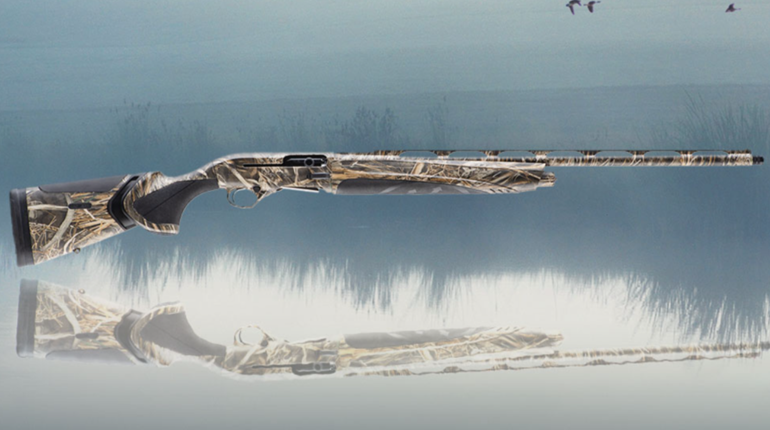1. Replace Old, Rotting Floorboards
A solid boat deck is imperative to a fun and, more importantly, safe waterfowl season. It’s the one part of your boat that will see action every time you hunt, despite the weather and birds. It’s a shooting platform, a dog bed and the base for your heavy decoy hauling needs.
Imagine putting your foot through the floor just as that gorgeous canvasback skirts over your blocks. Looking like a fool would be the least of your worries. Ignoring this one is not a good idea. And since you want your new floors to last—because let’s face it, this is not a job you want to do again—it’s not a bad idea to coat them with an epoxy resin or water-sealing wood stain.
Tools: screwdrivers, pry-bar, hammer, handheld drill, jigsaw, disposable buckets, paintbrushes, gloves
Materials: High-grade or marine plywood ($75-$100 per sheet so measure twice, this stuff is expensive), new hardware (deck screws), epoxy resin or water-sealing wood stain. We used the 635 Thin Epoxy Resin System from U.S. Composites ($30), but a deck sealant from the hardware store will work too.
Procedure: Start taking your boat apart. Remove screws, cut only if you have to. You may need to remove sidewalls. It’s best to think it through. You’d hate to spend time removing screws you don’t have to or worse, ones you shouldn’t have—trust me. Also, try to keep the old floor in the best shape possible. It’s great to use as a template for your new boards.
Once you get the old boards out, measure and trace the new ones, measure again, and one more time for good measure, then cut them out and follow the instructions on the resin or sealer to coat. Remember to wear gloves. Mark your screw holes and your new deck is ready to install.
2. Add or Replace Flotation
Adding flotation foam under the floorboards does one (important) thing: It keeps your boat afloat. It means a safer ride for you and your crew. If you have the ability to do it, it’s a no brainier. And you might find once those floorboards are up that the old foam you have is waterlogged and rotting. In that case, replacing it is necessary.
Tools: Knives, handsaws, razor blades, hammers, disposable buckets, paint stirrers, measuring cups you do not care about, gloves
Materials: Foam, we used the 2-Part Liquid, Expanding Urethane Foam from U.S. Composites ($67); plastic trash bags.
Procedure: First, remove any old foam you have in the bottom of your boat and clean out the hull as best you can. Line boat with plastic bags to cover creases you don’t want foam to spread into. Follow the instructions to mix the two-part foam chemicals in one of the disposable buckets and pour into the hull of your boat. Be careful not to over-pour as this stuff expands fast and can get out of hand quick. Repeat process to fill necessary parts with foam, but remember to leave a space down the center of your boat for wiring and for water to exit. You also want to make sure expanding foam doesn’t go above the plane of your floor boards. If, no when, you find you’ve poured too much, wait for it to harden and simply cut the excess away.
3. Replace Old Trailer Hardware
The cable winch is an often overlooked, but necessary, part of a successful hunt, as it all starts with the launch. Just imagine having to push and pull your fully loaded rig without it. Marine stores sell complete replacement kits. If you need one, buy it. In addition, rubber keel rollers eventually rot out and brackets rust, so give them a once-over and replace the ones that need it.
Tools: Socket wrench, screwdrivers
Materials: Manual Trailer Winch ($50) Keel Roller Kit ($40)
Procedure: Use the wrench and your muscle to remove the old winch; it shouldn’t be more than a couple of bolts. Make note if you need to keep them; some replacement kits don’t come with new hardware. If existing hardware is in good condition, then you’re good to go, but bolts are relatively cheap so don’t fret about getting new ones. Follow the directions and install the new winch.
Replacing the rollers may be a bit tricky. More than likely you’ll have to have a naked trailer to access them so launch your boat, and bring the necessary tools and equipment to do the work nearby. Simply remove the old hardware and put the new stuff on.
Unfortunately for you, there will be little to show for all this hard work. No new bells and whistles on display, and few people will notice your new deck. They’ll just have to take your word for it in regard to the foam. But you’ll know, and more important than that is the peace of mind you’ll get in knowing your boat will get you through a few more seasons of cold mornings, rough water and maybe a few ducks.







































